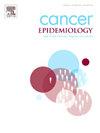Rurality and pediatric cancer survival in the United States: An analysis of SEER data from 2000 to 2021
IF 2.4
3区 医学
Q3 ONCOLOGY
引用次数: 0
Abstract
Background
Cancer is the leading cause of death by disease among children in the United States. Residing in rural areas may impact cancer outcomes as rural areas tend to have fewer available healthcare resources. Few population-based studies have investigated rural/urban disparities in pediatric cancer outcomes. The objective of this study was to examine rural/urban differences in (1) five-year relative survival and (2) cancer-specific survival among children in the United States.
Methods
The study is a population-based longitudinal study using data from the Surveillance, Epidemiology, and End Results (SEER) 17 registries database (2000–2021). We included data for individuals aged 0–19 with a first primary malignant cancer diagnosed from 2000 to 2016. Rurality was measured by Rural-Urban Continuum Codes (RUCCs). Five-year relative survival rates, Kaplan-Meier curves, and Cox regression analysis were used to determine the differences in pediatric cancer survivorship between rural and urban areas.
Results
Both five-year relative survival rates and log-rank tests of survival probabilities over time by rurality showed no statistically significant difference between individuals living in urban versus rural counties. However, after adjusting for age, sex, race/ethnicity, cancer type, median household income, and region, children diagnosed in rural counties had a 9 % higher risk of death compared to children diagnosed in urban counties (95 % CI 1.02–1.17), with the highest increased risk observed for children with retinoblastoma (aHR: 6.12, 95 % CI 2.01–18.59). A higher increased risk of death was observed for children living in the most rural counties (aHR: 1.18, 95 % CI 1.07–1.32).
Conclusion
In this study, residing in rural areas was associated with an increased risk of death from pediatric cancer, especially for children residing in rural areas not adjacent to urban areas. Our findings warrant further investigation to determine the rural/urban disparities in pediatric cancer outcomes and to develop interventions to deliver high-quality cancer care to rural children.
美国乡村地区与儿童癌症存活率:对 2000 年至 2021 年 SEER 数据的分析。
背景:癌症是美国儿童因病死亡的主要原因。居住在农村地区可能会影响癌症的治疗效果,因为农村地区可用的医疗资源往往较少。很少有基于人群的研究调查了儿科癌症结果的城乡差异。本研究旨在探讨美国农村/城市儿童在(1)五年相对生存率和(2)癌症特异性生存率方面的差异:本研究是一项基于人群的纵向研究,使用的数据来自监测、流行病学和最终结果(SEER)的 17 个登记数据库(2000-2021 年)。我们纳入了 2000 年至 2016 年期间首次确诊为原发性恶性肿瘤的 0-19 岁人群的数据。农村地区通过农村-城市连续编码(RUCCs)来衡量。采用五年相对生存率、Kaplan-Meier曲线和Cox回归分析来确定城乡之间儿科癌症生存率的差异:结果:五年相对存活率和农村地区存活概率的对数秩检验均显示,生活在城市和农村地区的个体之间没有显著的统计学差异。然而,在对年龄、性别、种族/民族、癌症类型、家庭收入中位数和地区进行调整后,农村地区确诊儿童的死亡风险比城市地区确诊儿童高 9%(95 % CI 1.02-1.17),其中视网膜母细胞瘤患儿的死亡风险最高(aHR:6.12,95 % CI 2.01-18.59)。居住在最偏远农村地区的儿童的死亡风险更高(aHR:1.18,95 % CI 1.07-1.32):在这项研究中,居住在农村地区与儿童癌症死亡风险增加有关,尤其是居住在不毗邻城市地区的农村地区的儿童。我们的研究结果值得进一步调查,以确定儿科癌症结果的城乡差异,并制定干预措施,为农村儿童提供高质量的癌症治疗。
本文章由计算机程序翻译,如有差异,请以英文原文为准。
求助全文
约1分钟内获得全文
求助全文
来源期刊

Cancer Epidemiology
医学-肿瘤学
CiteScore
4.50
自引率
3.80%
发文量
200
审稿时长
39 days
期刊介绍:
Cancer Epidemiology is dedicated to increasing understanding about cancer causes, prevention and control. The scope of the journal embraces all aspects of cancer epidemiology including:
• Descriptive epidemiology
• Studies of risk factors for disease initiation, development and prognosis
• Screening and early detection
• Prevention and control
• Methodological issues
The journal publishes original research articles (full length and short reports), systematic reviews and meta-analyses, editorials, commentaries and letters to the editor commenting on previously published research.
 求助内容:
求助内容: 应助结果提醒方式:
应助结果提醒方式:


